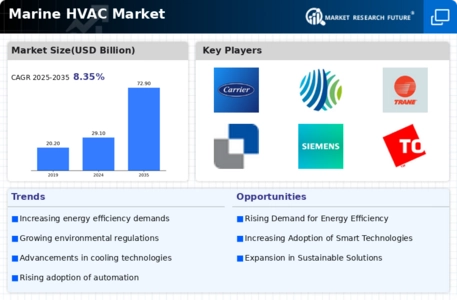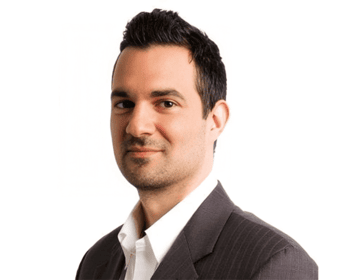Market Growth Projections
The Global Marine HVAC Market Industry is poised for substantial growth, with projections indicating a market size of 29.1 USD Billion in 2024 and an anticipated increase to 72.9 USD Billion by 2035. This growth trajectory reflects a compound annual growth rate of 8.72 percent from 2025 to 2035. The expansion is driven by various factors, including technological advancements, regulatory compliance, and the increasing demand for energy-efficient systems. As the maritime industry evolves, the HVAC market is likely to adapt, presenting opportunities for innovation and investment in sustainable solutions.
Growth in the Maritime Industry
The Global Marine HVAC Market Industry is significantly influenced by the expansion of the maritime sector. The increasing number of commercial vessels, including cargo ships and cruise liners, necessitates advanced HVAC solutions to ensure passenger comfort and operational efficiency. According to industry reports, the global fleet is expected to grow, leading to heightened demand for HVAC systems that can cater to larger vessels. This growth trajectory is likely to propel the market forward, with a projected compound annual growth rate of 8.72 percent from 2025 to 2035, underscoring the importance of HVAC systems in modern maritime operations.
Rising Awareness of Indoor Air Quality
The Global Marine HVAC Market Industry is increasingly shaped by the growing awareness of indoor air quality (IAQ) among ship operators and passengers. Enhanced IAQ is essential for ensuring the health and comfort of individuals onboard vessels. As a result, there is a rising demand for HVAC systems that incorporate advanced filtration and ventilation technologies. These systems not only improve air quality but also contribute to the overall well-being of passengers and crew. The emphasis on IAQ is expected to drive innovation within the market, leading to the development of more sophisticated HVAC solutions tailored to maritime environments.
Increasing Demand for Energy Efficiency
The Global Marine HVAC Market Industry experiences a notable surge in demand for energy-efficient systems. As environmental regulations tighten, shipbuilders and operators are increasingly adopting HVAC solutions that minimize energy consumption. This trend is driven by the need to reduce operational costs and comply with international standards. For instance, energy-efficient HVAC systems can lead to a reduction in fuel consumption by up to 30 percent, thus enhancing the overall sustainability of marine operations. The market is projected to reach 29.1 USD Billion in 2024, reflecting the industry's commitment to energy efficiency and environmental stewardship.
Technological Advancements in HVAC Systems
Technological innovations play a pivotal role in shaping the Global Marine HVAC Market Industry. The integration of smart technologies, such as IoT and AI, enhances system performance and monitoring capabilities. These advancements enable real-time data analysis, predictive maintenance, and improved climate control, which are crucial for optimizing onboard comfort and safety. For example, smart HVAC systems can adjust temperature settings based on occupancy and weather conditions, resulting in enhanced energy savings. As these technologies continue to evolve, they are expected to drive market growth, contributing to an anticipated market size of 72.9 USD Billion by 2035.
Regulatory Compliance and Environmental Standards
Regulatory frameworks and environmental standards are crucial drivers of the Global Marine HVAC Market Industry. Governments worldwide are implementing stringent regulations aimed at reducing greenhouse gas emissions and promoting sustainable practices within the maritime sector. Compliance with these regulations often requires the adoption of advanced HVAC systems that meet specific environmental criteria. For instance, the International Maritime Organization has set ambitious targets for reducing emissions, compelling ship operators to invest in more efficient HVAC technologies. This regulatory pressure is likely to stimulate market growth as companies seek to align with these evolving standards.























